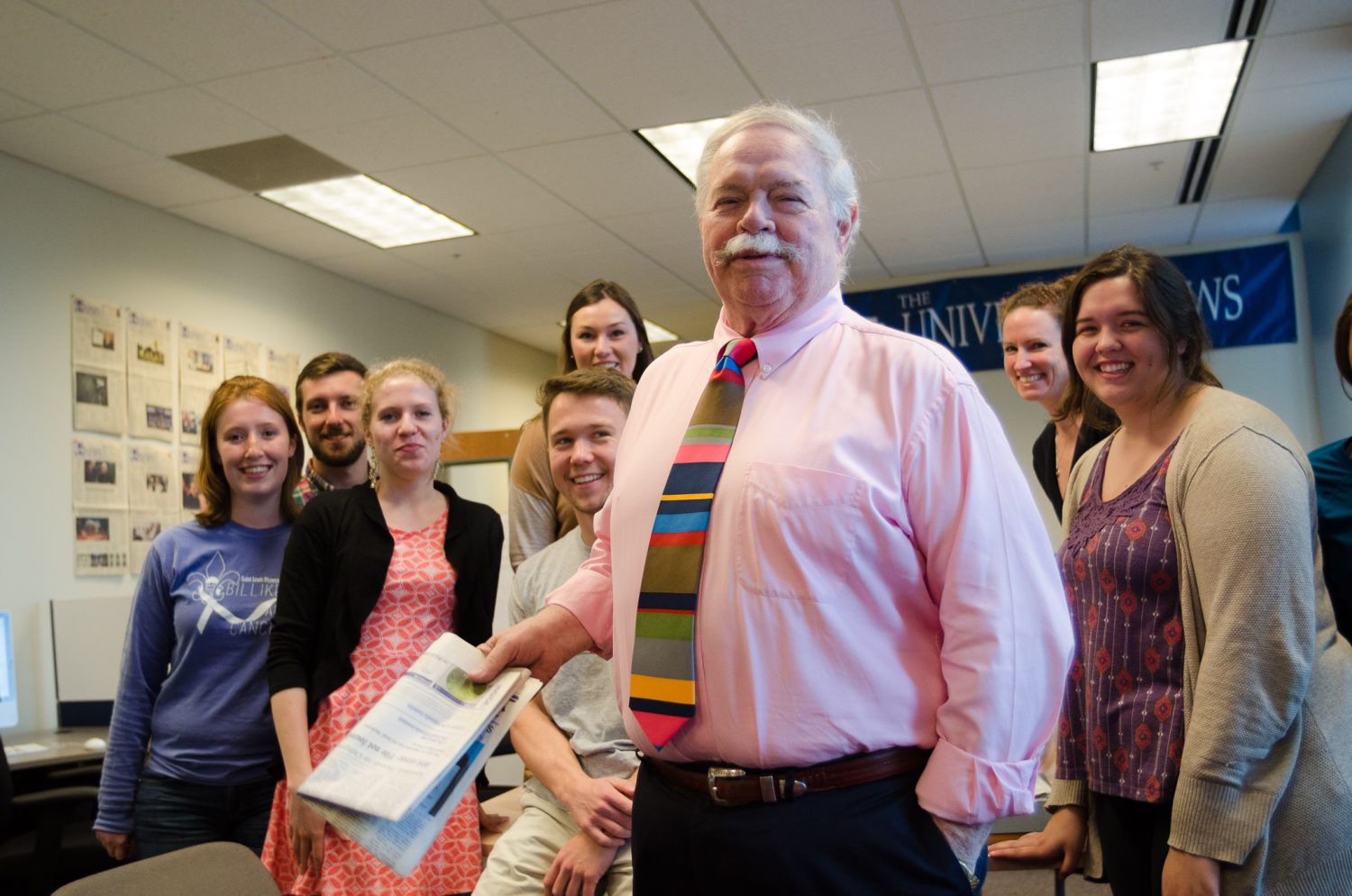Perhaps your first experience of the Tivoli Theatre was being dragged by a film-buff friend to what looked like a seedy part of town to see a movie that wasn’t showing anywhere else; perhaps it was hanging out in the lobby when the theater still showed triple features; perhaps it was watching a vaudeville act. Well, maybe not that, but it’s possible.
Since its founding in 1924, the theater’s 180-foot edifice has been a trademark of Delmar Boulevard in the University City Loop and its auditorium a magnet for some of the most unique artistry and citizenry in St. Louis.
“My memories are of being in the lobby between screenings of Andy Warhol or John Waters triple-features, smoking clove cigarettes and exchanging phone numbers. It was a great place to meet people with similar interests. In the early ’80s, alternative pop culture was really underground. If you wanted a Black Flag album you couldn’t just drive to the mall–you had to go to Delmar or the West End or something like that,” said native filmmaker Bill Boll, whose first feature film, April is My Religion, debuted at the theater at last fall’s 10th-annual St. Louis International Film Festival (SLIFF). “What made the Tivoli so great was that they had different films every night, and you couldn’t rent any of them on home video. So if you wanted to meet other Bowie fans in St. Louis, you knew they would all be at the Tivoli on Jan. 12 to see The Man Who Fell to Earth and Merry Christmas Mr. Lawrence, no matter how much ice was on the road that night.”
For many, the Tivoli holds a certain sacred appeal simply because it is anything but normal, anything but the generic hang-outs the kids frequent these days. The theater also stands as a stronghold of serious cinema, the value of which goes well beyond the theater’s social reputation.
“The Tivoli, along with Plaza Frontenac, remain the titans of indie and foreign films in St. Louis. Their targeted and thoughtful programming may not always score huge box office success, but they strive to bring important eclectic films to town,” said Christ Clark, curator of the SLIFF since June of 2000 and volunteer with the festival since 1998. “Without Landmark programming, St. Louis would seriously lack in indie, foreign and alternative programming. It is truly a showpiece for all of St. Louis and a favorite of our own guests.”
The second oldest cinema in the city, next to the Hi-Pointe, which was built two years before, the Tivoli was built in 1924 by U. City father E.G. Lewis.
The theater’s first evening of operation featured what was dubbed as a “photoplay,” orchestral music and five vaudeville acts. What patrons today see as a large screening room flanked by two smaller ones was then one single auditorium–that seated more than 1,000 people–complete with an orchestra pit, stage and movie screen. Paul Faur, Tivoli’s chief of staff, said that originally the theater showed what would have been considered mainstream cinema, but by the ’70s it found its niche as a unique St. Louis venue.
The theater began showing more classics and B movies, even dabbling in porn. Faur said there are still rumors the theater shows porn, which is not the case.
In that crucial decade, the name of the theater also changed, briefly taking on the moniker The U. City Cinema, then The Magic Lantern Cinema, only to return to the Tivoli. In 1977, the theater came under the direction of Landmark Theatres, the nation’s largest art-house chain, which was only three years old at the time.
By the ’80s the theater was still popular, but it had begun a slow decline into dilapidation. “Back when I was in high school, they had at least double features, and the films changed every day or two, so the Tivoli would show a dozen different films every week, on a single screen,” Boll said, recalling the Tivoli of the ’80s. “But the Tivoli was not the ideal viewing environment. In the winter the auditorium was freezing, in the summer it got hot. I remember some of the seats being bad. It was pretty ratty, but no one cared.”
Boll also thinks that the theater helped shape his cinematic exposure. “Seeing works by quirky European filmmakers and American indies can teach you a lot about direct oral vision. Today, Hollywood’s going through a phase where all the films are heavily stylized, but you don’t get the sense of a director’s personal touch. I think that being exposed to amateur filmmaking is really empowering as a director, because it opens your eyes to the possibilities of expression you might not have been aware of otherwise.”
Patrick Denny, another native filmmaker whose mockumentary Tom and Francie screened at last year’s SLIFF, recalls getting the same vibe from the theater in the late ’90s. “The great thing about the Tivoli was that you didn’t know what to expect. There wasn’t a lot of advertising. You went with no expectations, no doubts.”
In 1991, Landmark dropped the Tivoli and in 1994, the building was condemned and scheduled to be demolished. Joe Edwards then undertook a $2.3 million renovation project that, in addition to revamping the overall look of the theater, added two smaller screens and restored the lobby plasterwork, marquee and 28-foot “Tivoli” sign to their 1924 status.
The theater re-opened in 1995 with state-of-the-art sound and projection systems as well as a fresh, nostalgic look.
In 1997, SLIFF began using one of the Tivoli’s screens and in 2000 it secured all three screens, making the theater its main venue for the 10-day festival.
In 1999, Landmark bought the Tivoli again. In 1998 Landmark had acquired the Plaza Frontenac Cinema, located in St. Louis County, and earlier this year Landmark rounded out its domination of indie theaters in St. Louis by picking up the Hi-Pointe.
In 2000, the Tivoli, with The Riverfront Times, premiered its popular summer re-run program, the Reel Late Midnight Movie Series, which shows classic and cult hits at midnight on Friday and Saturday from late May to October.
As of August, the theater has continued its calendar series, which features weeklong first-runs of movies that would otherwise not screen in St. Louis. The Tivoli was recently named, for the seventh year in a row, the best movie theater in town, according to an RFT readers poll. The next main event for the theater is the 11th annual SLIFF, from Nov. 14 to 26.
And how does today’s Tivoli stack up to other art houses around the world? “The Tivoli holds up,” Denny said. “I currently live in New York where there are a few more entertainment options. There are certain places that you go to that have history and a respect of their heritage. That’s what separates the Tivoli from other venues its confidence in its identity and its commitment to showing interesting films.”
Despite all its changes, the Tivoli’s fans have remained mostly the same, Faur said. “Our audience is generally better educated, more discriminating and more informed about the movies they see than those that go to commercial movie theaters. Our customers genuinely care about movies and demand the best, and it’s our challenge to give it to them. These people believe in the power of the movies, and so do we,” Faur said, noting that college students and film buffs compromise most of the theater’s audience.
“I think we’re a lot more engaging in the community around here,” Faur added. The Tivoli will participate in The Loop in Motion this weekend.



